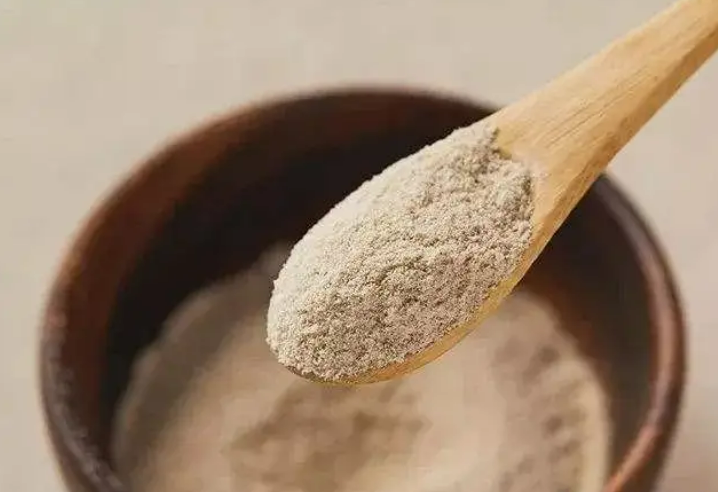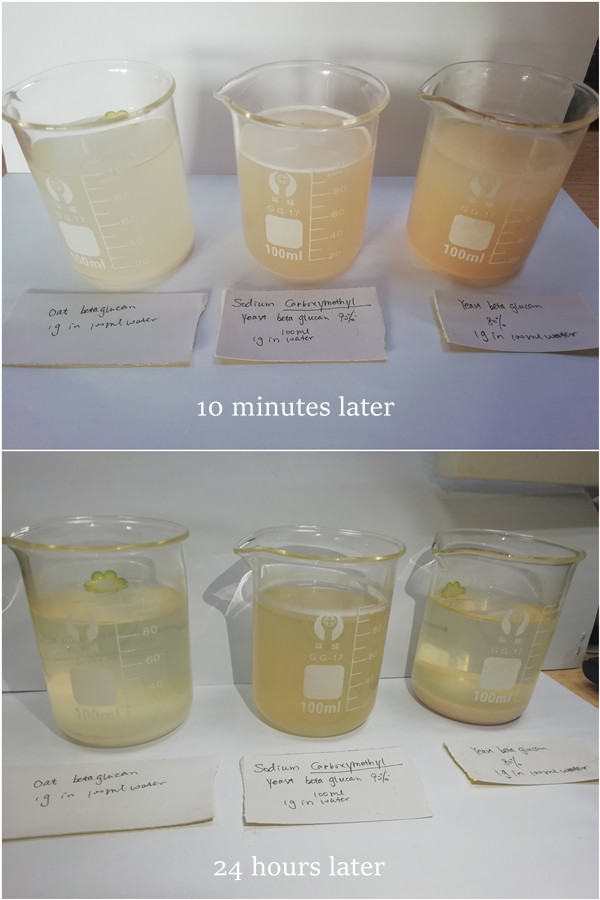Difference between Yeast, Mushroom and Oat Beta-Glucan
Beta-glucans are naturally occurring in plants and certain bacteria, as well as yeast. It is found in a variety of different food sources, including yeast, oats, fungi such as shiitake mushrooms, seaweed and certain bacteria, the best source of beta-glucan are grains such as barley and oats, also found in rolled oats and oat flour. Beta-glucan is composed of individual GLUCOSE molecules, which are linked at the 1,3 and 1,4 carbon sites of the polysaccharides. There are several different types of beta-glucans and not all sources of beta-glucan have the same structure and properties.
Beta-glucan may offer a number of health benefits, including lowering cholesterol, improving blood sugar management, and boosting the immune system. Beta-glucan extract after all complex purification process, other cell components like protein, lipids, nucleic acids, minerals and mannans are removed, high contents and purified beta-glucan. The higher the content, the better the effect. Yeast, oatmeal and mushroom β-glucan are the most abundant and commonly used glucan. Here today we will introduce the difference between Yeast Beta-Glucan, Mushroom Beta-Glucan and Oat Beta-Glucan.
What’s Oat Beta-Glucan?
The soluble form of oat beta-glucan is derived from the cell walls of the oat bran. Several health benefits are associated with oat beta-glucan. In addition to its digestive benefits, it has been found to improve digestion and regulate blood glucose levels to reduce the risk of coronary heart disease and lower blood cholesterol levels. The oat beta-glucan is soluble and has been shown to reduce appetite, promote weight loss, and support cardiovascular health. In addition, it can regulate blood sugar levels and help fight infection.
What’s Yeast β-glucan?
Yeast β-glucan, a functional polysaccharide present in the cell wall of yeast, is also found in the mucus secreted by microorganisms during their growth. It is formed with β-1, 3-d-glucan as the main chain and β-1, 6-D-glucan as the branch chain. Modern research found that Agaricus blazei contains the most abundant B glucopolysaccharide and has high biological activity. Yeast β-glucan is a polysaccharide with obvious immune-enhancing activity, which is the first glucan found to have immune activity. In addition, it has unique biological activities for tumors, hepatitis, cardiovascular, diabetes, blood lipid-lowering, anti-aging and other aspects.
Difference between Oat, Yeast and Mushroom Beta-Glucan
Molecular structure
Glucans are found in many different plants and are mainly composed of glucose residues. These carbohydrates have a variable molecular weight. Some are more soluble than others, and the MW can vary between the different types of glucans. A variety of studies have been conducted to determine the health benefits of different types of glucan. Oat beta-glucan is It is comprised of unbranched linear chains with b-(1-3) glycosidic bonds. These chains have a relatively high molecular weight (MW) and are soluble. Yeast and mushroom beta-glucan have the same molecular structure.
| Sources | Molecular structure |
| Oat | β 1, 3/1,4 |
| Yeast | β 1, 3/1,6 |
| Mushroom | β 1, 3/1,6 |

Yeast beta Glucan
Water solubility
β-glucan is a water-soluble dietary fiber, which can be dissolved in water to form a highly viscous solution. Mushroom β-glucan is less soluble in water and yeast β-glucan is not soluble in water, which limited the use of cosmetics. So the scientists modified yeast beta-glucan and carboxymethylated it to create water-soluble polysaccharides. Carboxymethylated β-Glucan is CM-Glucan, which is why you may find β-glucan or CM-Glucan in the ingredient list of skin care products.
Uses
They are considered to be a natural fiber and have been used as a prebiotic fiber. Yeast and oat beta-glucan have distinct properties and may provide different benefits to the human body. They may be beneficial in helping to reduce LDL cholesterol act as a prebiotic. During fermentation, oat b-glucans produce a substance called propionate, which acts as an inhibitor of HMG CoA reductase, which reduces the body’s ability to manufacture cholesterol. This inhibition may contribute to the metabolic effects of oat b-glucan. Yeast beta-glucans have been found to improve cholesterol levels as well as the immune system.
In addition to its dietary fibre properties, yeast, and mushroom beta glucan also interact with Peyer’s patches in the small intestine, which are thought to contain immune cells. They may also help to modulate the production of antibodies. They are thought to help to increase Th1 lymphocytes and suppress Th2 cells. It turns out that there are receptor sites for yeast and mushroom β-glucan on the surface of human white blood cells. Just like the lock on the door can only be opened with the correct key, the positions of these receptors are particularly consistent with the structural composition of β-glucan. When mushroom or yeast β-glucan binds to the receptor, it activates white blood cells in a very specific way to help resist invading organisms.
At Rainbow Biotech, we manufacture and bulk oat, yeast, and mushroom beta-glucan with high purity and competitive price, the specification is shown below:
| Beta-glucan | Specification |
| Oat beta-glucan | 70% |
| Yeast beta-glucan | 70%-80% |
| Mushroom beta glucan | 10%-30% |
They also help to improve insulin resistance and may have a prebiotic effect on the intestines. Studies have shown that beta-glucan supplements have long been used to treat diseases such as high blood pressure and diabetes, cancer treatment and modulate the immune system and reduce inflammation. Now, beta-glucan are considered to be safe and are approved by regulatory agencies in the United States. If it help for your health projects, contact us today!
Click here to see our more about β -glucan information:
- Dandelion Extract: What It Is, Benefits, Uses and Side Effect - April 23, 2024
- Is Berberine Extract Help For Weight Loss? - April 11, 2024
- Why Is Pysllium Husk Powder A Popular Meal Replacement Ingredient? - April 3, 2024






